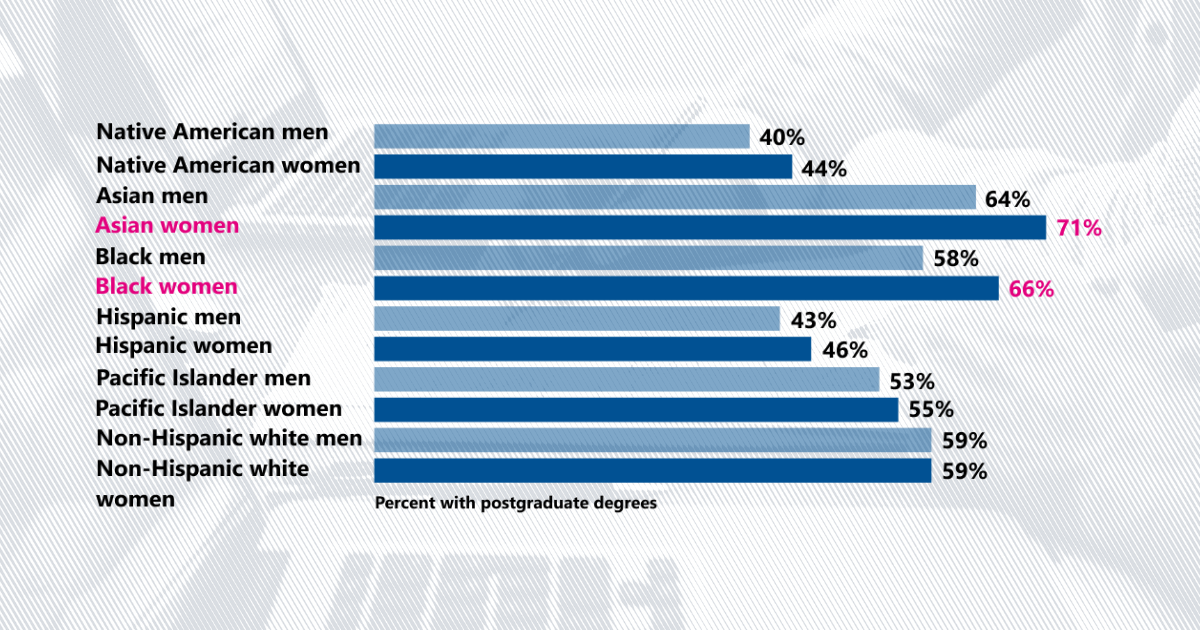Education
Who are the nation’s 4 million teachers?

Education
Education
Some schools offered multiple types of instruction. Data on the pandemic's impact on K-12 educational outcomes is not yet available.
Education
Although the Education Department has not released its per-pupil spending estimates, Census estimates per-pupil spending increased 5% between fiscal years 2018 and 2019. State and local governments directed 92.3% of K-12 spending in 2019.
Education
Nearly four out of five Black and Hispanic eighth graders are not proficient in these areas. Fifty-seven percent of Asian eighth graders are reading-proficient and 64% are math-proficient; 42% of white eighth graders are reading-proficient while 44% are math-proficient.
Education
Sixty-three percent of students at four-year colleges graduate within six years, while 33% of students at two-year colleges graduate within three years. Forty-four percent of Black students enrolled in four-year colleges graduate within six years.
Education
Education
Government and institutions awarded students an average of $19,637 in grant aid in 2016, almost twice the 1993 average, according to the most recent government data.
Education
People with a bachelor’s degree earn roughly 65% more than workers with just a high school diploma.